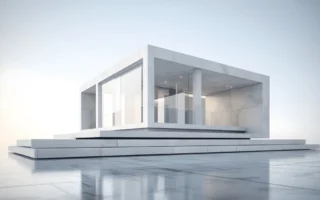Introduction:
The debate over whether architecture qualifies as a STEM (Science, Technology, Engineering, and Mathematics) field has been a subject of ongoing discussion among educators, professionals, and students alike. While architecture is undeniably a creative pursuit rooted in aesthetics and design, it also draws heavily on principles of science, mathematics, and technology. In this exploration, we delve into the various dimensions of architecture and examine whether it meets the criteria for inclusion in the STEM umbrella.
1: Defining STEM and Its Components:
To assess whether architecture belongs in STEM, it’s essential to first understand what constitutes the STEM disciplines. STEM encompasses four key fields: Science, Technology, Engineering, and Mathematics.Through observation, experimentation, and analysis, science studies the natural world. Technology refers to the application of scientific knowledge to solve practical problems and create innovative solutions. Engineering focuses on the design, construction, and optimization of systems, structures, and processes. Mathematics provides the theoretical framework and tools for modeling, quantifying, and analyzing phenomena across various domains.
2: Architecture as a Design Science:
At its core, architecture is a design discipline that integrates elements of art, science, and technology to create built environments that are functional, aesthetically pleasing, and socially meaningful. Architects employ scientific principles such as physics, structural mechanics, and environmental science to design buildings that are structurally sound, energy-efficient, and environmentally sustainable. They use advanced technologies such as computer-aided design (CAD), Building Information Modeling (BIM), and parametric modeling to visualize, simulate, and optimize their designs. Moreover, architects rely on mathematical concepts such as geometry, proportion, and calculus to achieve harmony, balance, and coherence in their compositions. In this sense, architecture can be viewed as a form of applied science that bridges the gap between theory and practice, creativity and rigor.
3: Architectural Engineering:
Bridging the Gap Between Architecture and STEM In recent years, the emergence of architectural engineering as a distinct discipline has further blurred the lines between architecture and STEM. Architectural engineering combines elements of architecture and engineering to design buildings that are both aesthetically pleasing and technically sophisticated. Architectural engineers collaborate closely with architects to ensure that their designs meet functional requirements, structural integrity, and safety standards. They apply principles of structural engineering, mechanical systems design, and building physics to optimize building performance and occupant comfort. By integrating engineering principles into architectural practice, architectural engineering represents a convergence of art and science that underscores the interdisciplinary nature of the built environment.
4: The Role of Technology in Architectural Practice:
Technology plays a central role in modern architectural practice, enabling architects to visualize, analyze, and communicate their designs more effectively than ever before. Computer-aided design (CAD) software allows architects to create detailed 2D and 3D models of buildings, facilitating the design process and enabling iterative refinement. Building Information Modeling (BIM) software enables architects to collaborate with other stakeholders, such as engineers, contractors, and clients, to coordinate project delivery and optimize building performance. Additionally, advanced simulation tools allow architects to analyze factors such as daylighting, thermal comfort, and energy consumption, helping to inform design decisions and improve building efficiency. As technology continues to evolve, architects are increasingly embracing digital fabrication techniques such as 3D printing and robotic construction to realize their designs with greater precision and efficiency.
5: Mathematics in Architectural Design and Analysis:
Mathematics is a fundamental tool in architectural design and analysis, providing architects with the quantitative tools and methods needed to conceptualize, evaluate, and optimize their designs. Geometry, for example, plays a crucial role in architectural composition, informing decisions about proportion, scale, and spatial relationships. Calculus is used to analyze structural loads and stresses, while trigonometry is employed to calculate angles and dimensions in complex geometries. Moreover, mathematical modeling techniques such as parametric design enable architects to explore a wide range of design possibilities and generate responsive and adaptive architectural forms. By leveraging mathematical concepts and techniques, architects can achieve elegance, efficiency, and precision in their designs, demonstrating the inherent connection between mathematics and architecture.
Conclusion: Architecture as an Interdisciplinary Pursuit
In conclusion, while architecture may not fit neatly into the traditional STEM framework, it undeniably shares commonalities with science, technology, engineering, and mathematics. As a design discipline rooted in principles of physics, mathematics, and technology, architecture bridges the gap between art and science, creativity and rigor. Architectural engineering represents a convergence of architecture and engineering that underscores the interdisciplinary nature of the built environment. Moreover, technology plays a central role in modern architectural practice, enabling architects to visualize, analyze, and communicate their designs more effectively than ever before. By embracing the principles and methods of STEM, architects can harness the power of science, technology, engineering, and mathematics to create innovative, sustainable, and resilient built environments that enrich the lives of individuals and communities alike.




